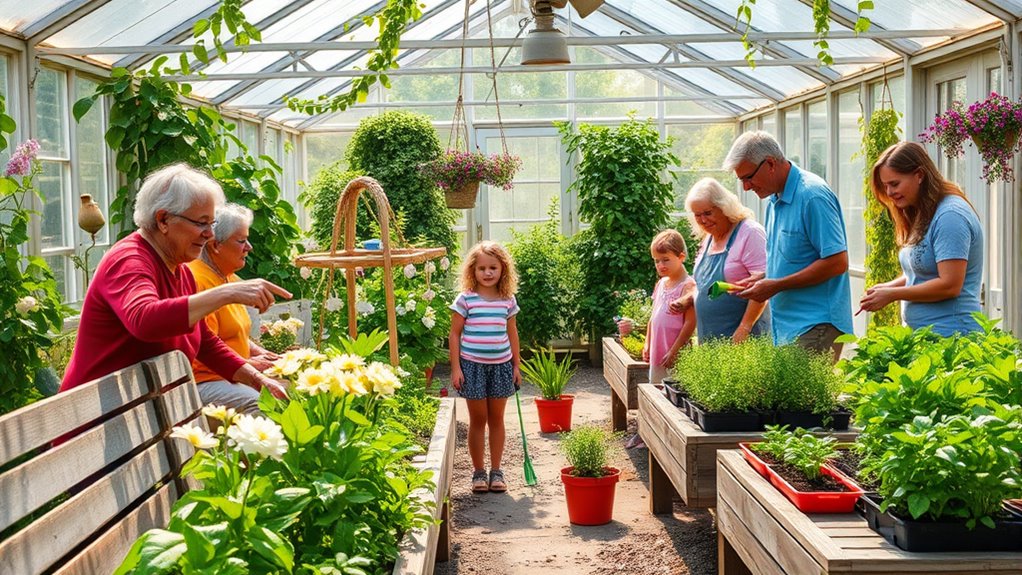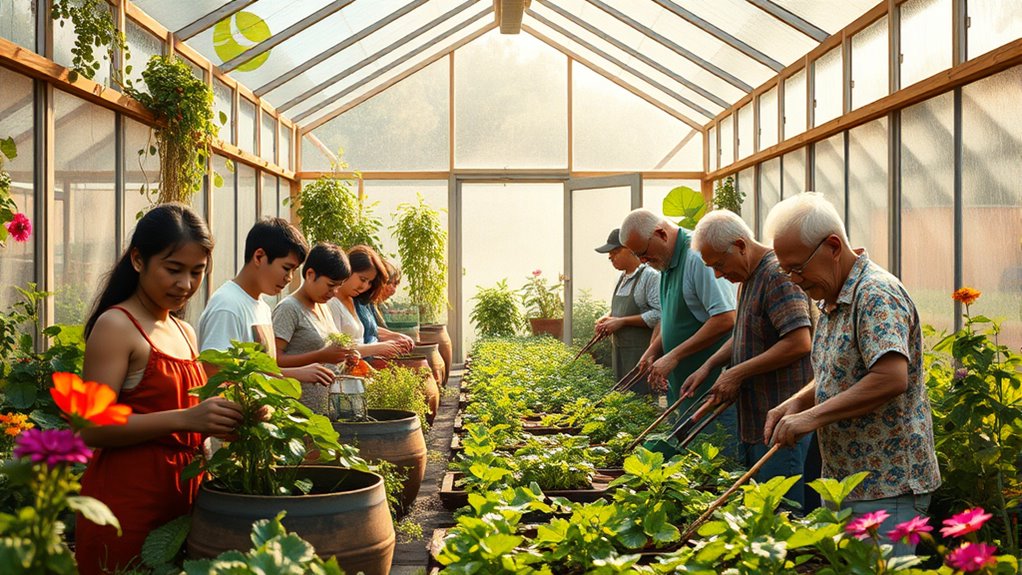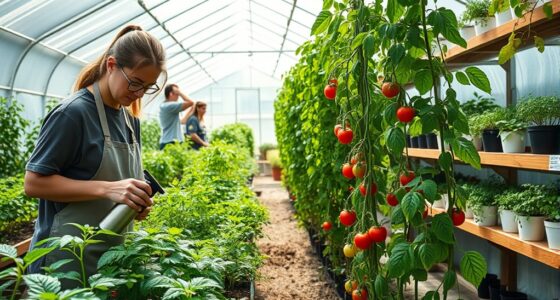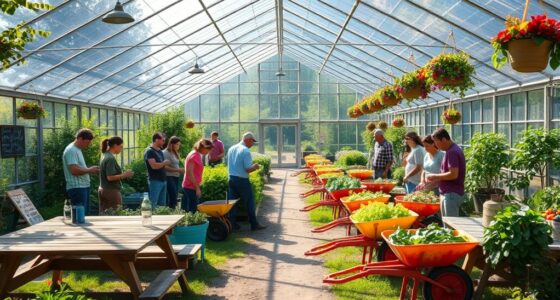Greenhouses help build social capital in tight-knit communities by serving as gathering spots where neighbors share resources, work together on gardening projects, and socialize regularly. They encourage collective goals, boost community engagement, and foster trust among residents. Greenhouses also strengthen existing relationships and create opportunities for intergenerational interaction. If you want to discover how these spaces can transform your neighborhood into a more connected place, there’s more to explore below.
Key Takeaways
- Greenhouses serve as communal spaces that promote social interaction and strengthen community bonds.
- They facilitate shared gardening projects, encouraging collaboration and collective problem-solving.
- Greenhouses increase trust and cooperation among neighbors, enhancing overall social cohesion.
- They provide platforms for intergenerational participation and ongoing community engagement.
- Greenhouses support local sustainability efforts, fostering a shared sense of purpose and pride.

Greenhouses and Social Capital.
Greenhouses serve as communal spaces where neighbors can come together, share resources, and collaborate on gardening projects, thereby strengthening community bonds and fostering a sense of shared purpose.
Frequently Asked Questions
How Do Greenhouses Influence Local Economic Development?
Greenhouses boost local economic development by promoting market diversification and creating entrepreneurial opportunities. You can leverage greenhouses to grow a variety of crops, reducing reliance on a single market. This encourages new businesses and jobs, strengthening the community’s economy. By supporting local farmers and entrepreneurs, greenhouses help attract investments, increase income, and foster resilience, making your community more vibrant and economically sustainable.
What Role Do Greenhouses Play in Educational Programs?
Greenhouses play a essential role in educational programs by fostering community engagement and providing hands-on learning experiences. You can participate in planting, nurturing, and harvesting, which helps deepen your understanding of sustainability and agriculture. They serve as interactive spaces where students and community members collaborate, share knowledge, and build connections, strengthening social bonds and inspiring a collective interest in environmental stewardship and healthy living.
Can Greenhouses Help Reduce Food Insecurity?
Imagine greenhouses as the ultimate food security superheroes! They can drastically cut urban farming costs, allowing communities to grow fresh produce year-round. By boosting local food production, greenhouses strengthen community resilience and reduce dependency on distant food sources. This means less hunger and more self-sufficient neighborhoods. So, yes, greenhouses can truly be a game-changer in fighting food insecurity and empowering communities to thrive independently.
How Do Greenhouses Foster Environmental Awareness?
Greenhouses foster environmental awareness by encouraging sustainable practices, like composting and water conservation, which you can adopt yourself. They promote community engagement, where residents learn together about eco-friendly methods and the importance of local food systems. By participating in greenhouse activities, you become more conscious of environmental impacts, helping to build a stronger, greener community. This hands-on experience makes sustainability tangible and motivates ongoing eco-friendly efforts.
What Challenges Do Greenhouse Initiatives Face in Tight-Knit Communities?
You might think community resistance and resource limitations are major hurdles for greenhouse initiatives, but these challenges can be addressed with strong engagement and innovative solutions. In tight-knit communities, resistance often stems from skepticism or fear of change, yet involving locals in planning fosters trust. Limited resources can be overcome through partnerships and volunteer efforts, ultimately strengthening social bonds and ensuring the greenhouse’s success and integration into the community fabric.
Conclusion
Think of a greenhouse as a sturdy bridge connecting hearts and hands in a tight-knit community. Just like plants thrive in shared sunlight and care, your community grows stronger through these spaces of collaboration. When you nurture relationships within the greenhouse, you’re planting seeds of trust and cooperation that blossom into lasting bonds. So, embrace these greenhouses as your community’s garden—where social capital blooms, and everyone’s roots become intertwined in a thriving, resilient network.










